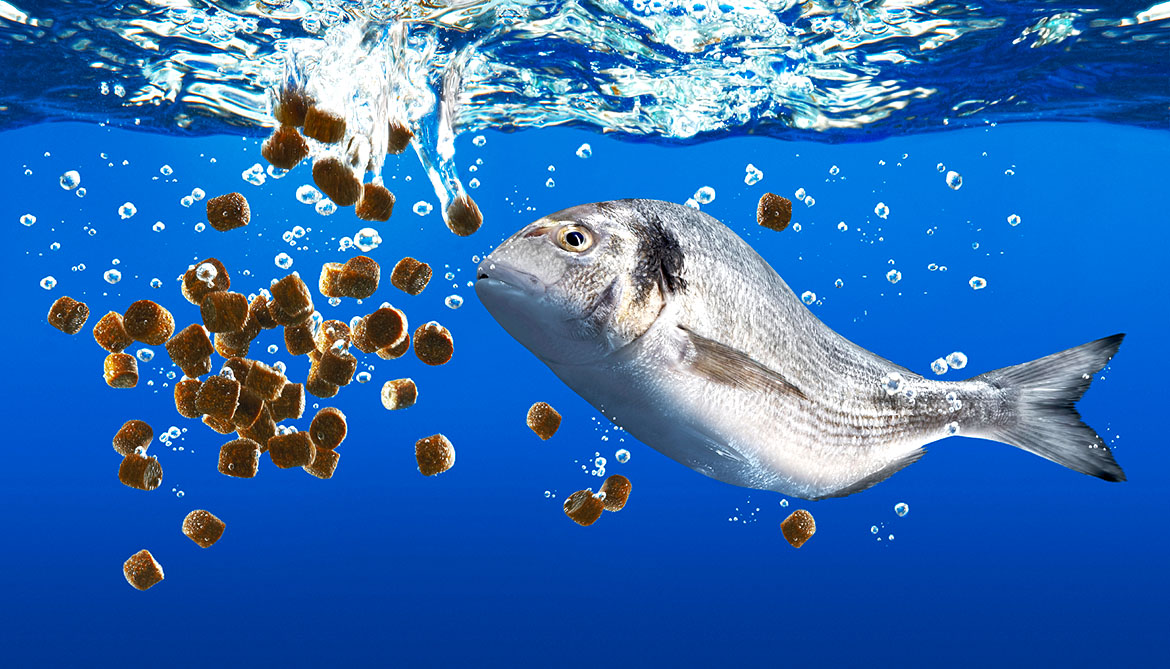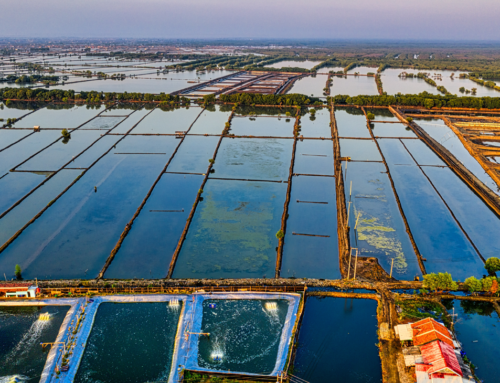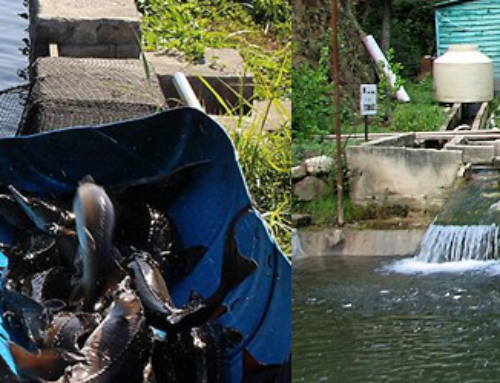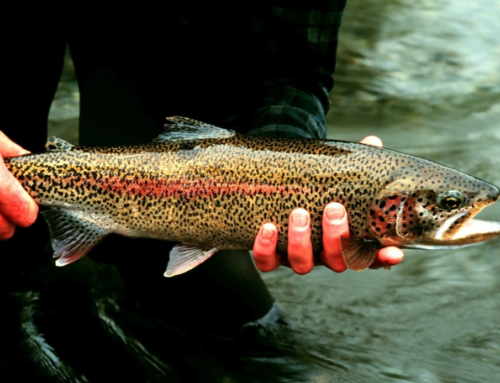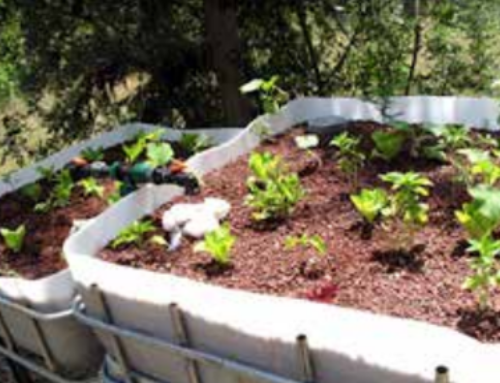Fish nutrition and over all good nutrition in animal production systems is essential to economically produce a healthy, high quality product.
In fish farming, nutrition is critical because feed represents 40-50% of the production costs.
When fish are reared in high-density indoor systems or confined in cages and cannot forage freely on natural feeds, they must be provided a complete diet. Maximum fish production is not possible without nutritious feed. The ingredients of well balanced nutritious feed for fish are protein, carbohydrate, fat, vitamins, minerals and water. (protein (18-50%), lipid (10-25%), carbohydrate (15-20%), ash (< 8.5%), phosphorus (< 1.5%), water (< 10%),and trace amounts of vitamins, and minerals.  Natural Fish Feed The feed which grows naturally in the pond or stream for the natural fertility of soil and water and by applying fertilizer is called natural feed of fish. Natural feed is the main source of necessary feed for surviving. Availability of natural feed indicate the primary production capability of a stream. The natural feed of fish are below.
Natural Fish Feed The feed which grows naturally in the pond or stream for the natural fertility of soil and water and by applying fertilizer is called natural feed of fish. Natural feed is the main source of necessary feed for surviving. Availability of natural feed indicate the primary production capability of a stream. The natural feed of fish are below.
- Plankton
- Wolffia, eichhornia, pistia, lemna
- Tiny aquatic insects
- Rotted part of animal and plants
- Basal organic elements
- Different types of grasses (napier, para etc.)
Supplementary Fish Feed Fish needs some extra feed along with available natural feeds in water for their regular growth. This extra feed which are provided to fish is called supplementary feed of fish. The ingredients of supplementary feed for fish are below.
- Rice bran
- Refined pulse and wheat roughage
- Mustard or sesame cake
- Fish-meal (fish powder)
- Crop grain
- Silk kit meal
- Blood and innards of bird or animal
- Green leaves of various vegetables
- Minerals and vitamins
- Kitchen leftovers
- Maize powder and refined chaff
- Dried molasses etc.
Farmed fish are usually fed on a combination of pellets made from ground fishmeal or vegetable matter. Different species of fish or shellfish require different types of feed. For example, freshwater species are more likely to consume plant products, while saltwater species may require animal proteins to survive. Complete Fish Feed Prepared or artificial diets may be either complete or supplemental. Complete diets supply all the ingredients (protein, carbohydrates, fats, vitamins, and minerals) necessary for the optimal growth and health of the fish. Most fish farmers use complete diets, those containing all the required protein (18-50%), lipid (10-25%), carbohydrate (15-20%), ash (< 8.5%), phosphorus (< 1.5%), water (< 10%), and trace amounts of vitamins, and minerals. When fish are reared in high density indoor systems or confined in cages and cannot forage freely on natural feeds, they must be provided a complete diet. In contrast, supplemental (incomplete, partial) diets are intended only to help support the natural food (insects, algae, small fish) normally available to fish in ponds or outdoor raceways. Supplemental diets do not contain a full complement of vitamins or minerals, but are used to help fortify the naturally available diet with extra protein, carbohydrate and/or lipid.
Fish, especially when reared in high densities, require a high-quality, nutritionally complete, balanced diet to grow rapidly and remain healthy.
Carnivorous Fish Carnivorous fish such as salmon, sea bass, cod and trout are fed on a diet of pellets made from pulped fish. Species such as sardine, anchovy, mackerel and shrimp are all used to create fish farm food. Herring is a common fish used in creating fish pellets for salmon, according to Stanford University. In some fisheries, particularly organic ones, fishmeal from bycatch or discarded fish is used to fishmeal. Vegetarian Fish Some farmed fish require little or no meat in their diet. These are often freshwater varieties such as catfish, tilapia and carp. Tilapia is one of the most-farmed species in the world with around 2.3 million metric tons produced each year, according to the World Wildlife Fund. Food pellets for vegetarian fish often consist of corn, soy and grain products. However, demand for fish is so high that some farms have started adding fishmeal to the diet of vegetarian fish in an effort to promote faster growth, according to Stanford University. Nutrition and Pellet Type  Feed should match the full nutritional requirements of the farmed fish species. The size and type of feed also differs depending on the type of fish and their age. For example, fry are usually fed on flakes or crumbled fishmeal, while older fish may consume larger hard pellets. Whether the pellets sink or float on the surface should depend on the fish’s natural method of feeding. For example, catfish are more commonly bottom feeders, while tilapia more often take food from the surface.
Feed should match the full nutritional requirements of the farmed fish species. The size and type of feed also differs depending on the type of fish and their age. For example, fry are usually fed on flakes or crumbled fishmeal, while older fish may consume larger hard pellets. Whether the pellets sink or float on the surface should depend on the fish’s natural method of feeding. For example, catfish are more commonly bottom feeders, while tilapia more often take food from the surface.

